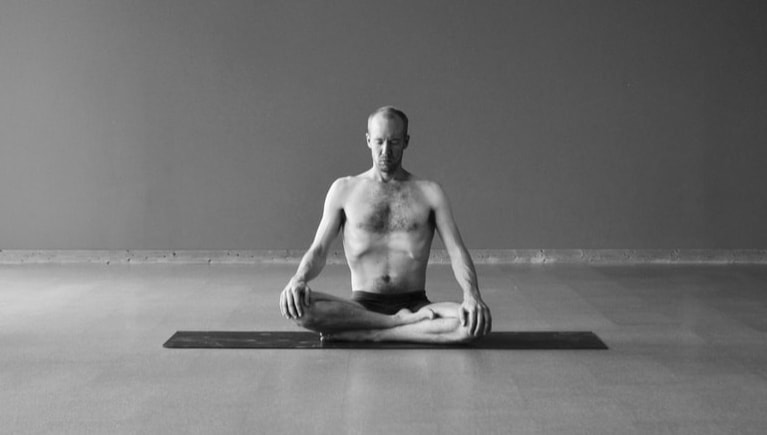|
Once we are using the body to breathe fully and properly, we start to affect the depth and frequency of the breath. This does two things: It changes the chemistry of the blood, which has lots of impacts on the function of the rest of the body; and it begins to bring us in touch with our autonomic nervous system, the part that controls our sub-conscious breathing and heart rate.
OXYGEN & CARBON DIOXIDE You may hear people talk about "oxygenation" of the blood through deep breathing, but that is not really what happens. Due to something called the (nerd alert!) oxygen-hemoglobin dissociation curve, it is next to impossible to change the amount of oxygen in our tissues in any meaningful way. Hemoglobin---the protein that carries oxygen in the blood---holds on tighter to oxygen when there is less coming in through the lungs. When there is lots of oxygen coming in, the hemoglobin allows it to come and go freely. This results in a steady supply of oxygen to the cells and tissues of the body, regardless of how much we breathe. The real chemical element that changes when we do breathing exercises is carbon dioxide. When we breathe more than normal, we expel lots of carbon dioxide from our system, changing the chemistry of the blood. Less carbon dioxide makes the blood alkaline, resulting in a cascade of secondary effects in our nervous system, lungs and brain. We often feel it as "light-headedness." When we breathe less than normal---the ultimate goal of yogic pranayama practice---carbon dioxide builds up in our blood, making it acidic. This creates a similar but opposite cascade of effects in the nervous system, lungs and brain. It causes dilation of the vessels in the brain and the desensitization of the peripheral nervous system. We feel it as a calm (or even numb) body and an alert mind. Does that sound like meditation to anyone? Once we are aware of the effects of our breathing on our brain, we start to control it. This is when we enter Level 3, where the true practice of Pranayama begins.
6 Comments
Franci Weller
8/14/2017 12:21:11 am
Love ❤️ this
Reply
Raghu
9/9/2019 07:05:55 pm
Thanks for sharing- pls teach us how to get to level 3, I have been practicing pranayama regularly, I just love it. Helps in anxiety. I’m really interested to learn more / level 3 you have talked about.
Reply
Samiksha Nalwaya
7/21/2020 03:47:31 am
Want to know the science of antah and bhayah kumbhak
Reply
Scott (Ghosh Yoga)
7/21/2020 10:08:20 am
Holding the breath after the inhale (antara kumbhaka) or after the exhale (bahya kumbhaka) are difficult pranayama practices. They began with the goal to control the physical elements of life, like breathing. This was thought to make us closer to the spirit. The ultimate expression of controlling the breath is to stop it, so these practices were done.
Reply
Leave a Reply. |
AUTHORSScott & Ida are Yoga Acharyas (Masters of Yoga). They are scholars as well as practitioners of yogic postures, breath control and meditation. They are the head teachers of Ghosh Yoga.
POPULAR- The 113 Postures of Ghosh Yoga
- Make the Hamstrings Strong, Not Long - Understanding Chair Posture - Lock the Knee History - It Doesn't Matter If Your Head Is On Your Knee - Bow Pose (Dhanurasana) - 5 Reasons To Backbend - Origins of Standing Bow - The Traditional Yoga In Bikram's Class - What About the Women?! - Through Bishnu's Eyes - Why Teaching Is Not a Personal Practice Categories
All
Archives
May 2024
|







 RSS Feed
RSS Feed